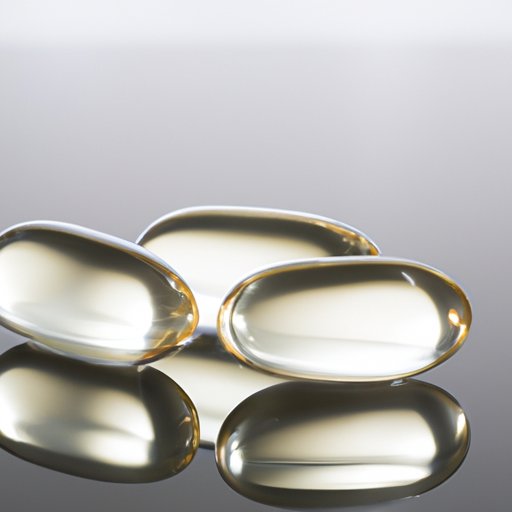
I. Introduction
Many of us have been repeatedly told to get enough vitamin D for optimal health. While vitamin D is readily available, we often fall short of meeting our daily requirement and can face various health problems. The problem may not be lack of availability but the ability of the body to absorb it. This article will help you understand the importance of vitamin D and provide various strategies to boost its absorption.
II. What is Vitamin D and How is it Absorbed by the Body?
Vitamin D is a crucial nutrient that helps support various functions and organs in the body. One of its most significant roles is to maintain strong bones and teeth. Vitamin D differs from other vitamins as it is produced by the body when exposed to sunlight. This is because sunlight is a powerful trigger for vitamin D synthesis in the skin.
Alternatively, vitamin D can also be found in various food sources, including fatty fish, egg yolk, and fortified foods. Supplements can also be a good source of vitamin D.
III. Vitamin-D Rich Foods to Add to Your Diet
There are many dietary sources of vitamin D, including:
- Fatty fish such as salmon, tuna, and mackerel
- Egg yolk
- Fortified food like milk, cereal, and orange juice
- Cod liver oil
- Beef liver
Eating foods high in vitamin D can promote strong bones and teeth, heart health, and even a healthy immune system. Besides, it’s pretty easy to incorporate vitamin-D rich food into one’s diet.
Enjoy canned salmon or tuna on a salad, or try grilled salmon with steamed vegetables. You can also substitute regular milk with fortified non-dairy milk like almond milk or oat milk.
IV. The Importance of Safe Sun Exposure
Exposure to sunlight is an essential part of getting enough vitamin D. Sun exposure on the skin triggers the production of vitamin D in our body. However, excessive sun exposure can lead to sunburn and increase the risk of skin cancer.
To get enough vitamin D from sunlight without increasing the risk of skin damage, it’s essential to follow safe sun exposure guidelines. For most people, exposing their arms, legs, or back to sunlight for 10-15 minutes during peak sunlight hours (between 10 am-2 pm) twice a week can provide enough vitamin D. After this, use sunscreen to protect your skin from excessive sun damage.
V. Lifestyle Factors that Affect Vitamin D Absorption
1. Exercise
Regular weight-bearing exercise has been shown to help promote vitamin D absorption. The reason behind this is that when we exercise, we break down old bone tissue, which stimulates the production of vitamin D to help form new bone tissue. So, incorporating weight-bearing exercises into your routine will help promote healthy bone growth.
2. Obesity
Recent research has shown that obesity can interfere with the body’s ability to absorb and utilize vitamin D effectively. This is because vitamin D gets stored in fat tissue and becomes less available for other metabolic functions. So, maintaining a healthy weight can contribute to better vitamin D absorption. Consider incorporating an exercise routine and a healthy diet to help manage your weight and promote optimal vitamin D absorption.
VI. The Importance of Regular Testing and Monitoring
Vitamin D levels can fluctuate over time, even daily, so regular testing of vitamin D levels is important. Speak to your healthcare provider about testing your vitamin D levels and monitoring them regularly. The optimal level of vitamin D varies depending on age and health status. Generally, a level between 30-50 ng/mL is recommended for healthy adults.
VII. Conclusion
Getting enough vitamin D is essential for optimal health, and there are several ways to ensure that your body is absorbing it. Incorporating more vitamin-D rich foods into your diet, taking supplements, practicing safe sun exposure, engaging in weight-bearing exercises, and monitoring your vitamin D levels can all be helpful strategies for optimal vitamin D absorption.
By following these strategies, you can promote healthy bone growth and reduce your risk of chronic diseases such as osteoporosis, hypertension, and type 2 diabetes. Be sure to consult your healthcare provider for guidance on how to improve your vitamin D levels and overall health.




